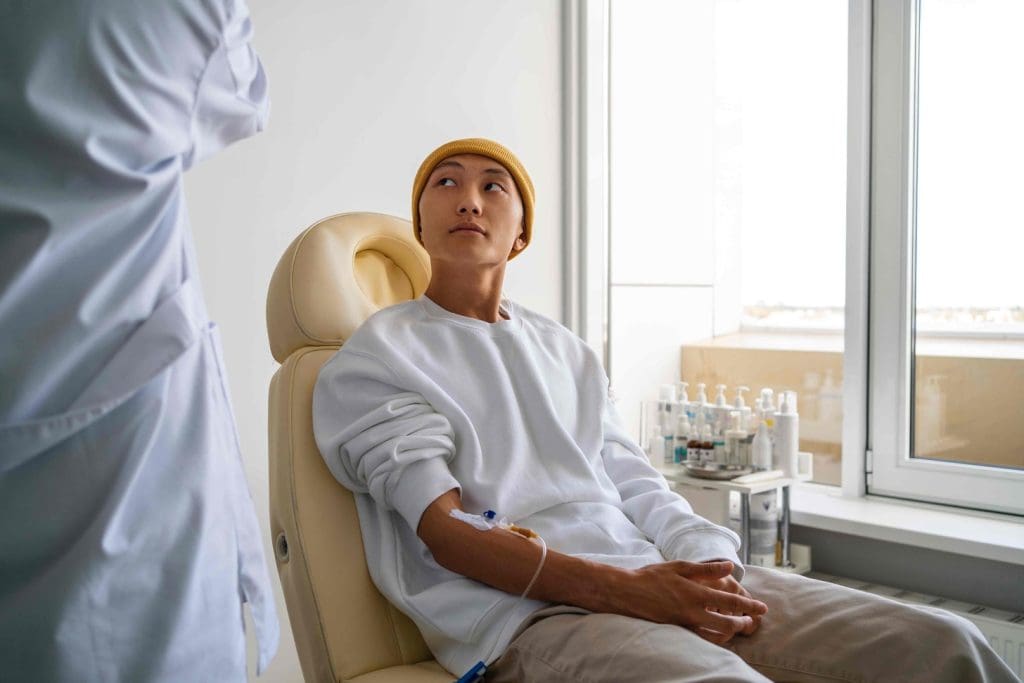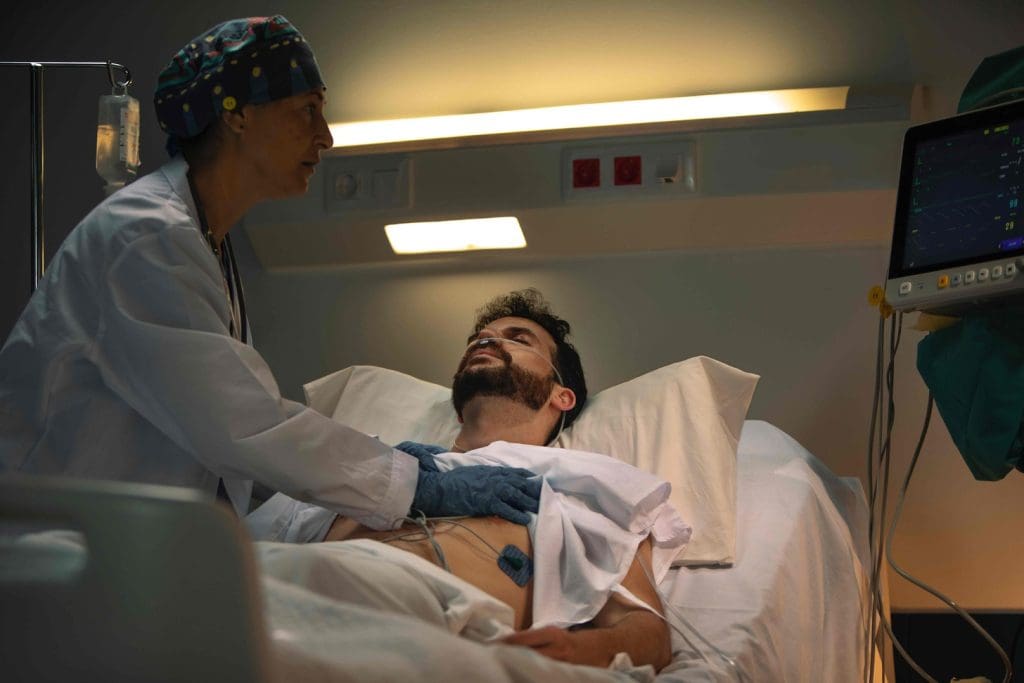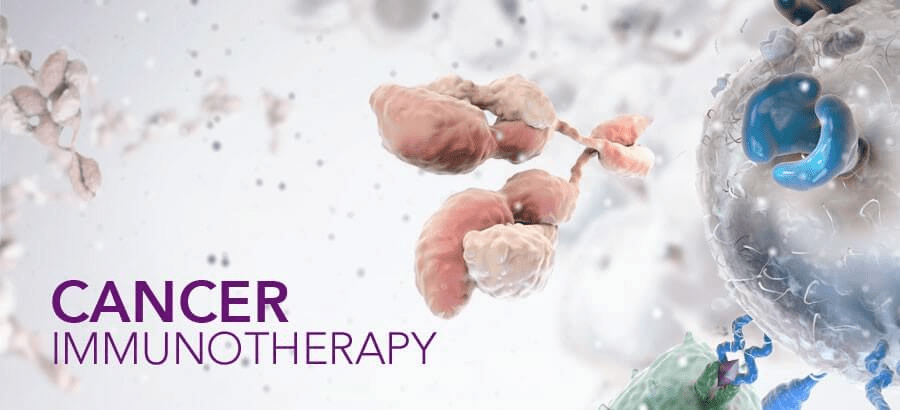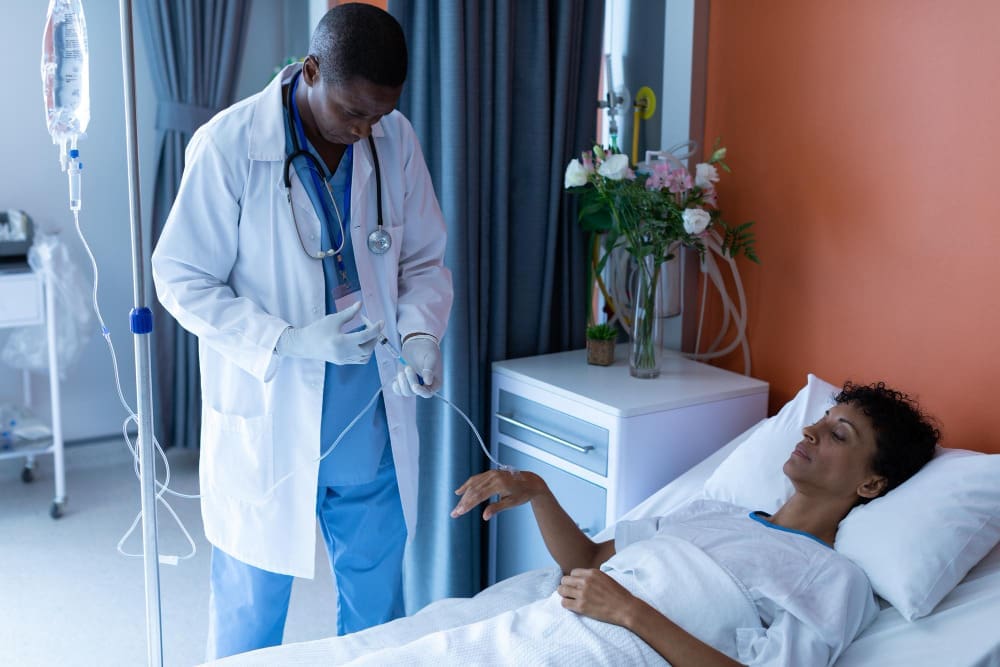Last Updated on November 26, 2025 by Bilal Hasdemir

Intravesical therapy has changed how we treat bladder cancer. It delivers chemotherapy right to the bladder. This cuts down on side effects that happen with treatments given through veins.
Professionals at Liv Hospital are dedicated to keeping our patients up-to-date with the latest in care. This includes using intravesical instillation therapies.
The FDA has approved new treatments like intravesical mitomycin (UGN-102; Zusduri). These are for low-grade, intermediate-risk, non“muscle-invasive bladder cancer. This treatment is nonsurgical and offers hope for patients looking for effective options with fewer side effects.
Key Takeaways
- Intravesical therapy targets bladder cancer directly, reducing systemic side effects.
- FDA-approved treatments like intravesical mitomycin offer nonsurgical alternatives.
- Intravesical instillation therapies are a significant advancement in bladder cancer care.
- Minimizing chemotherapy side effects is a key benefit of intravesical therapy.
- Patients have access to the latest treatments, ensuring complete care.
What Is Intravesical Therapy for Bladder Cancer?
Intravesical therapy is a new way to treat bladder cancer. It uses chemotherapy or immunotherapy drugs directly in the bladder. This method targets the tumor site, reducing side effects for the rest of the body.
By putting the drugs right in the bladder, intravesical therapy lowers the body’s exposure. This can make side effects from chemotherapy less severe.
The Science Behind Chemo Wash for Bladder Cancer
Intravesical therapy, or chemo wash, delivers chemotherapy directly to the bladder. It ensures high concentrations of the drug are in contact with the bladder lining for a long time. This targets cancer cells effectively.
- The drug is instilled into the bladder through a catheter.
- The patient is typically asked to retain the drug in the bladder for about 1-2 hours.
- During this time, the drug comes into contact with the bladder walls, targeting cancer cells.
- After the treatment session, the drug is voided from the bladder.
Advantages Over Systemic Chemotherapy Administration
Intravesical therapy has many benefits over traditional chemotherapy. It minimizes systemic absorption and reduces side effects. This targeted approach can lead to:
- Reduced systemic toxicity.
- Higher drug concentrations at the tumor site.
- Potential for improved efficacy due to prolonged exposure of the tumor to the therapeutic agent.
Understanding intravesical therapy’s benefits and how it works helps patients and doctors make better treatment plans for bladder cancer.
The Intravesical Instillation Procedure Explained
The intravesical instillation procedure is a key part of treating bladder cancer. It delivers chemotherapy directly to the bladder. This method uses a catheter to put the drugs right where the cancer is.
Step-by-Step Process of a Bladder Chemo Wash
The process of intravesical instillation, or bladder chemo wash, is simple. Here’s how it works:
- A catheter is inserted into the bladder through the urethra.
- The chemotherapy medication is then instilled into the bladder through the catheter.
- The medication is retained in the bladder for a specified period, usually about 1-2 hours.
- After the retention period, the patient urinates to expel the medication.
This procedure is done in a clinical setting, like a hospital or outpatient clinic, by a healthcare professional.
What to Expect During Your Treatment Session
Here’s what you can expect during your treatment:
- Preparation: You’ll be on an examination table. The area around the urethra will be cleaned and prepared for the catheter.
- Catheter Insertion: A lubricated catheter will be gently inserted into your bladder through the urethra.
- Medication Administration: The chemotherapy medication will be instilled into the bladder through the catheter.
- Retention Period: You’ll need to keep the medication in your bladder for a set time. You might be asked to change positions to make sure the medication covers all areas of the bladder lining.
- Voiding: After the retention period, you’ll urinate to get rid of the medication from your bladder.
It’s important to listen to your healthcare team’s instructions. This ensures the procedure is done right and safely.
Common Bladder Cancer Chemo Side Effects from Intravesical Treatment
Intravesical therapy is a key treatment for bladder cancer but comes with side effects. This treatment puts medicine directly into the bladder. This can cause side effects that patients need to know about.
Urinary Symptoms: Frequency, Urgency, and Discomfort
Urinary symptoms are common side effects of this treatment. Patients may feel the need to urinate more often and with urgency. They might also feel discomfort while doing so.
Drinking plenty of water can help with these symptoms. Sometimes, doctors prescribe medicine to ease these issues.
Temporary Cystitis and Bladder Irritation
The treatment can also cause temporary cystitis, or bladder inflammation. This leads to painful urination and feeling like the bladder is always full. These symptoms usually go away after treatment ends.
Mild Bleeding and Urine Discoloration
Another side effect is mild bleeding or urine that looks pink. This is usually temporary and goes away by itself.
Here’s some data on these side effects:
| Side Effect | Prevalence | Management Tips |
|---|---|---|
| Urinary Frequency/Urgency | Common | Stay hydrated, adjust fluid intake |
| Temporary Cystitis | Common | Medication for symptom relief |
| Mild Bleeding/Urine Discoloration | Less Common | Monitor, usually resolves on its own |
Knowing about these side effects helps patients prepare for treatment. It also tells them when to see a doctor if symptoms don’t get better or get worse.
Intravesical Chemotherapy Options and Their Specific Effects
We have several intravesical chemotherapy options, like Mitomycin C and Gemcitabine. Each has its own effects on bladder cancer. The choice depends on the cancer’s stage, grade, and the patient’s health.
Mitomycin C: Side Effect Profile and Management
Mitomycin C is a common treatment for bladder cancer. It works well but can cause side effects. These include frequent urination, urgency, and discomfort.
To manage these, patients are told to drink lots of water. They should also avoid caffeine and spicy foods.
Common side effects of Mitomycin C include:
- Urinary symptoms like frequency and urgency
- Bladder irritation and discomfort
- Mild bleeding or urine discoloration
Healthcare providers may suggest medications to help with these symptoms. Sometimes, they might need to adjust the treatment schedule or dose.
Gemcitabine Bladder Instillation: Newer Options with Fewer Side Effects
Gemcitabine is a newer option for treating bladder cancer. It might have fewer side effects than Mitomycin C. This makes it a good choice for some patients.
Key benefits of Gemcitabine bladder instillation include:
- Reduced risk of severe urinary symptoms
- Lower incidence of bladder irritation
- Potential for improved tolerability
It’s important to watch for and manage side effects. Healthcare providers work with patients to adjust treatment plans. This helps minimize any negative effects.
Understanding the different intravesical chemotherapy options helps patients and healthcare providers make the best treatment plan.
BCG Instillation for Bladder Cancer: Unique Considerations
BCG instillation is a key treatment for bladder cancer. It uses a special immunotherapy method. This method involves putting Bacillus Calmette-Guérin (BCG) directly into the bladder. It helps the immune system fight cancer cells.
Understanding BCG as an Immunotherapy Option
BCG immunotherapy boosts the immune system to attack bladder cancer cells. It’s different from chemotherapy, which directly kills cancer cells. BCG uses the body’s immune response instead.
Key benefits of BCG immunotherapy include:
- Enhanced immune response against bladder cancer
- Potential for reduced tumor recurrence
- Targeted treatment with minimal systemic side effects
Flu-like Symptoms and Systemic Reactions
BCG instillation often causes flu-like symptoms. These symptoms can include:
- Fatigue
- Fever
- Chills
- Malaise
These symptoms are usually mild and go away in a few days. But sometimes, they can be serious and need medical help.
Long-term Side Effect Concerns with BCG Treatment
BCG instillation is usually safe, but there are long-term side effects. These can include:
- Bladder irritation and decreased bladder capacity
- Recurring urinary tract infections
- Rarely, systemic BCG infection
It’s important to see a healthcare provider regularly. This helps manage these long-term effects.
Infection Risk Following Intravesical Therapy
Intravesical therapy is a treatment for bladder cancer but comes with a risk of infection. It’s important to know about the possible complications, like urinary tract infections (UTIs).
Recognizing Signs of Urinary Tract Infection
UTIs can happen after intravesical therapy. Spotting the signs early is key to managing them well. Look out for:
- Frequent urination: Needing to go more often than usual.
- Urgency: A sudden, strong need to urinate.
- Dysuria: Pain or burning when you pee.
- Cloudy or strong-smelling urine: Urine that looks different or smells bad.
- Pelvic pain: Pain in the pelvic area, more common in women.
If you notice any of these symptoms, reach out to your doctor right away. Quick action can stop the infection from getting worse.
Preventive Measures to Reduce Infection Risk
There are steps you can take to lower the risk of infection. Here are some tips:
- Hydration: Drink lots of water to flush out bacteria.
- Proper hygiene: Keep your genital area clean, wipe correctly, and avoid harsh products.
- Post-treatment care: Follow your doctor’s instructions after treatment, which may include ways to prevent infection.
- Monitoring: Watch for any changes in how you pee or symptoms, and tell your doctor.
By knowing the risks and taking steps to prevent them, you can lower your chance of getting a UTI after intravesical therapy. It’s a team effort between you and your healthcare team to get the best results.
Rare but Serious Complications to Be Aware Of
Intravesical therapy is usually safe, but there are rare serious issues to watch out for. These problems can really affect your life and need quick medical help.
Severe Allergic Reactions to Intravesical Agents
Severe allergic reactions to the therapy agents are rare but serious. Symptoms include trouble breathing, a fast heartbeat, and low blood pressure. In some cases, it can lead to anaphylaxis, a life-threatening reaction that needs fast treatment.
We tell patients to tell their doctor right away if they notice any odd symptoms. Quick action and treatment are key to avoiding serious problems.
Bladder Contracture and Long-term Function Issues
Bladder contracture is another possible issue from intravesical therapy. It makes the bladder scarred and unable to stretch or hold urine. This can cause long-term problems like needing to pee a lot, feeling urgent, and discomfort.
| Complication | Symptoms | Management |
|---|---|---|
| Bladder Contracture | Urinary frequency, urgency, discomfort | Medications, bladder training, surgery in severe cases |
| Severe Allergic Reactions | Difficulty breathing, rapid heartbeat, drop in blood pressure | Emergency medical treatment, antihistamines, corticosteroids |
When to Seek Immediate Medical Attention
It’s important to know when to get help fast. If you have severe symptoms like intense pain, heavy bleeding, or signs of an allergic reaction, get medical help right away.
We suggest keeping a record of your symptoms and side effects during and after therapy. This info is very helpful for your doctor to manage any problems well.
Knowing about these rare but serious issues helps patients be ready and know when to seek help. We aim to give you the best care and support during your treatment.
Managing Intravesical Chemo Wash Side Effects: Practical Tips
Managing side effects from intravesical chemo wash is key to better patient outcomes. This treatment targets bladder cancer cells directly. It causes fewer side effects than systemic chemotherapy. Yet, it’s important to manage these side effects to keep quality of life high during treatment.
Hydration Strategies Before and After Treatment
Drinking enough water is critical before, during, and after treatment. Drinking lots of water helps flush out the drugs and lowers side effect risks. Aim for 8-10 glasses of water a day, unless your doctor says differently.
Avoid caffeinated and alcoholic drinks as they can irritate the bladder. Drinking cranberry juice might also help prevent urinary tract infections.
Medication Options for Symptom Relief
There are many medications to help with side effects from intravesical chemo wash. For urinary issues like frequency and urgency, phenazopyridine can help. Anticholinergic drugs may also be used to reduce bladder spasms.
For pain, over-the-counter drugs like acetaminophen or ibuprofen are often suggested. Always check with your doctor before taking any medication to make sure it’s safe.
| Medication | Symptom Relief | Precautions |
|---|---|---|
| Phenazopyridine | Urinary frequency, urgency, discomfort | May cause urine discoloration |
| Anticholinergic medications | Bladder spasms | May cause dry mouth, constipation |
| Acetaminophen/Ibuprofen | Pain relief | Consult healthcare provider for dosage |
Lifestyle Adjustments During Treatment Cycles
Some lifestyle changes can help manage side effects. Avoid heavy lifting and bending to reduce bladder pressure. Wearing loose, comfortable clothes can also help.
Eating a healthy diet full of fruits, vegetables, and whole grains supports your health. Keeping a symptom diary to track side effects and report them to your doctor is also helpful.
By following these tips, patients can better manage side effects and improve their treatment experience.
Statistical Overview: What the Research Shows About Side Effects
It’s key for patients to know about side effects when thinking about intravesical therapy for bladder cancer. Research has given us important info on its safety.
Incidence Rates of Common Side Effects
Most patients with intravesical therapy face some side effects, but they’re usually mild. The usual side effects are:
- Urinary frequency and urgency
- Bladder discomfort or pain
- Mild bleeding or urine discoloration
Research shows that side effects vary. For example, about 30-40% of patients deal with urinary frequency. Around 20-30% experience bladder discomfort.
Duration and Resolution Timeframes
Most side effects from intravesical therapy are short-lived and go away in a few days to weeks. Here’s what we’ve found:
- Urinary symptoms usually get better in 1-2 weeks.
- Bleeding or urine color changes often clear up in a few days.
It’s good to know that serious side effects are rare, happening in less than 5% of patients.
Quality of Life During Intravesical Treatment
Side effects can affect daily life, but many patients can keep up with their usual activities. We suggest staying hydrated and following certain tips to ease discomfort. Important tips include:
- Drink lots of water to help the chemotherapy agent spread out.
- Avoid things that might irritate your bladder, like caffeine and spicy foods.
- Take your meds as directed to manage symptoms.
By knowing about side effects and taking steps to manage them, patients can handle their treatment better. This helps keep their quality of life good.
Innovations in Intravesical Therapy Reducing Side Effects
New technologies and treatment methods are making intravesical bladder cancer treatments better. We’re seeing big steps forward in intravesical therapy. These steps aim to cut down side effects and improve patient results.
New Drug Delivery Systems
New drug delivery systems are a key innovation. They’re made to get chemotherapy right to the bladder, cutting down on side effects all over the body. Some exciting new things include:
- Nano-particle based delivery: Helps drugs get into bladder cancer cells better.
- Thermotherapy: Uses heat to make intravesical chemotherapy work better.
- Drug-eluting devices: Release drugs slowly into the bladder.
Combination Therapies with Improved Tolerability
Combination therapies are another big area of study. Researchers mix different treatments to make them work better and have fewer side effects. Some examples are:
- Adding intravesical chemotherapy with immunotherapy to help the immune system fight cancer.
- Using a mix of drugs that work in different ways to attack bladder cancer more effectively.
Emerging Research on Side Effect Management
There’s also a lot of work on emerging research on side effect management. Scientists are looking into new ways to lessen common side effects like urinary problems and bladder irritation. Some ideas being looked at are:
- Creating therapies that target cancer without harming healthy bladder tissue.
- Exploring how things like drinking lots of water and using bladder protectants can help reduce side effects.
These new developments in intravesical therapy are going to change how we treat bladder cancer. They offer hope for treatments that are more effective and easier to handle.
Conclusion: Weighing the Benefits Against Side Effects of Intravesical Therapy
Intravesical therapy is a key treatment for bladder cancer. It targets cancer cells directly in the bladder, reducing side effects elsewhere in the body. This method involves putting chemotherapy or immunotherapy agents right into the bladder.
The good news is that intravesical therapy can lower the chance of cancer coming back or getting worse. Side effects like needing to pee a lot, feeling urgent, and discomfort are common. But, they can often be managed with the right care and precautions.
Thanks to new drug delivery systems and combination therapies, treatments are getting better. This makes intravesical therapy a good choice for many patients. By knowing the possible side effects and taking steps to handle them, patients can get the most from their treatment.
As research keeps moving forward, we’ll see even more effective and easier-to-take intravesical therapies. Intravesical therapy is a big step forward in treating bladder cancer. It offers a targeted and less invasive option for patients.
We suggest patients talk to their healthcare provider about their needs and worries. This will help decide if intravesical therapy is the best option for treating their bladder cancer.
FAQ
What is intravesical therapy for bladder cancer?
Intravesical therapy is a treatment for bladder cancer. It involves putting medication directly into the bladder. This method reduces side effects compared to treatments given through veins.
How does intravesical instillation work?
To do intravesical instillation, a catheter is put into the bladder. Then, a chemotherapy solution is filled into the bladder. It stays there for a while before being drained out.
What are the common side effects of intravesical chemotherapy?
Side effects include frequent urination and urgency. You might also experience mild bleeding and urine that looks different.
What is BCG instillation, and how does it differ from chemotherapy?
BCG instillation uses an immunotherapy to fight bladder cancer. It works differently than chemotherapy, which directly kills cancer cells.
What are the side effects of BCG instillation?
BCG instillation can cause flu-like symptoms and urinary issues. Rarely, it can lead to serious infections or reactions.
How can I manage the side effects of intravesical chemo wash?
To manage side effects, stay hydrated and take medication as needed. Making lifestyle changes during treatment can also help.
What is the risk of infection following intravesical therapy?
There’s a risk of urinary tract infections after intravesical therapy. Recognizing infection signs early and taking preventive steps can lower this risk.
Are there any rare but serious complications associated with intravesical therapy?
Yes, rare but serious complications include severe allergic reactions and bladder contracture. These can affect bladder function long-term.
How effective is gemcitabine bladder instillation compared to other intravesical chemotherapy options?
Gemcitabine bladder instillation has a better side effect profile than some other chemotherapy options. For example, it’s better than Mitomycin C.
What innovations are being explored to reduce the side effects of intravesical therapy?
New drug delivery systems and combination therapies are being developed. Research is also focused on managing side effects.
How do I know when to seek immediate medical attention during intravesical therapy?
Seek immediate medical help for severe symptoms like intense pain, heavy bleeding, or signs of infection. This includes fever or chills.
- Albers, E., Jocham, P. U., & Stöhr, J. W. H. (1979). Intravesical chemotherapy with adriamycin in superficial bladder tumours. A preliminary study. The Urologic Clinics of North America, 6(3), 543“548. https://pubmed.ncbi.nlm.nih.gov/1636237/
- Bladder Cancer Advocacy Network (BCAN). (n.d.). Intravesical Therapy. Retrieved from https://bcan.org/intravesical-therapy/
- Cancer Research UK. (n.d.). Intravesical chemotherapy for non-muscle-invasive bladder cancer. Retrieved from https://www.cancerresearchuk.org/about-cancer/bladder-cancer/treatment/non-muscle-invasive/chemotherapy-bladder
- O’Meara, T. J. (2023, September 13). What to know about intravesical chemotherapy. Medical News Today. Retrieved from https://www.medicalnewstoday.com/articles/intravesical-chemotherapy
- Urology Health. (2019, Spring). Non-Muscle Invasive Bladder Cancer: Intravesical Therapy. UrologyHealth Extra Magazine. Retrieved from https://urologyhealth.org/healthy-living/urologyhealth-extra/magazine-archives/spring-2019/non-muscle-invasive-bladder-cancer-intravesical-therapy








